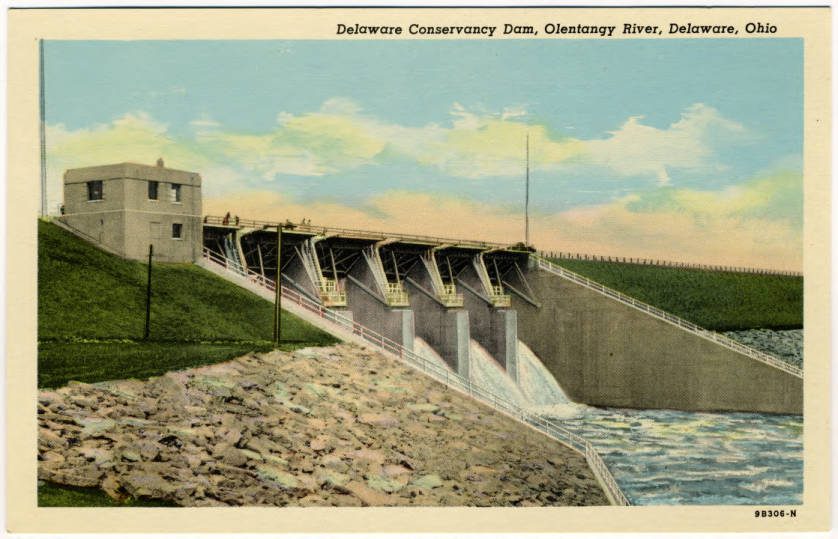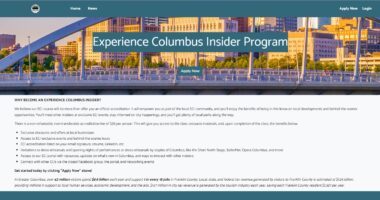By 1808Delaware
Today, in our “Everything You Always Wanted To Know About” series we take a look at a well-known piece of infrastructure, one that has greatly impacted the northern half of Delaware County.
About Delaware Dam
Delaware Dam is a rolled earth fill dam with a concrete gated spillway section, located about 4 miles north of the city of Delaware. The dam is 3.5 miles long and 92 feet high, and controls a drainage area of 386 square miles through the use of five gated sluices and six 25-foot by 32-foot tainter/radial gates.
The dam was authorized by the Flood Control Act of 1938 and constructed between 1947 and 1951 by the U.S. Army Corps of Engineers, Huntington District, at a cost of $4,307,000.
The main purposes of the dam are flood reduction, low-flow control for pollution reduction and water supply, recreation, and fish and wildlife management. Delaware Lake, the reservoir created by the dam, is a 1,300-acre lake that is part of a system of dams that reduce flood stages in the Olentangy, Scioto, and Ohio River Basins.
The dam and surrounding Delaware State Park offer a variety of recreational activities, including boating, fishing, camping, hiking, and disc golfing.
History of Delaware Dam
The first dam at the site was a wooden dam built around 1822 by Col. Byxby to provide water power for a nearby sawmill.
In response to the coming war with the British and Indians, a Captain Taylor later directed the building of a palisade around the nearby tavern, creating Fort Morrow to protect local settlers, though no actual attacks were recorded.
The current Delaware Dam was authorized by the Flood Control Act of 1938 as part of a larger plan to control flooding in the Ohio River Basin.
Environmental Impacts
Dams like the Delaware Dam can cause significant changes to the flow regimes, physical habitats, and sediment transport in the river system. This can impact the populations of aquatic organisms like algae, benthic macroinvertebrates, fish, and riparian vegetation.
Delaware’s rivers and streams, including those affected by the Delaware Dam, have high levels of pollution from sources like agricultural runoff and industrial facilities. This has led to a high percentage of Delaware’s waterways being classified as impaired for uses like recreation, aquatic life, and drinking water. On the other hand, the Delaware Dam and resulting Delaware Lake provide recreational opportunities like boating, fishing, and hiking.
Sources: US Army Corps of Engineers; ODNR; Recreation.gov










